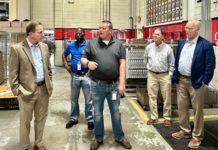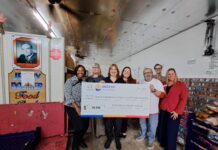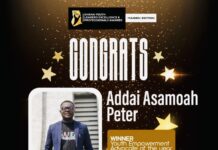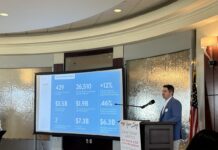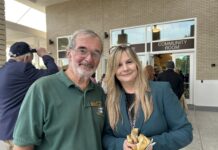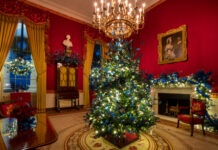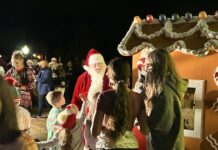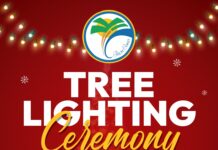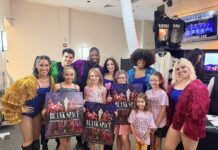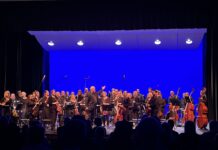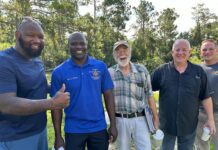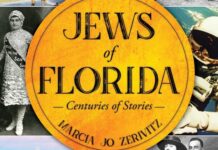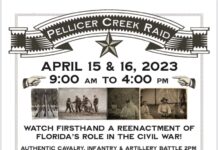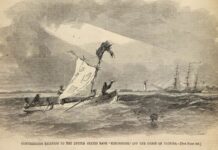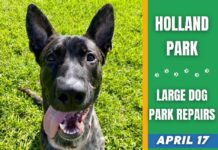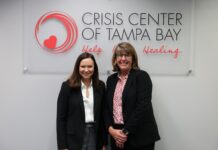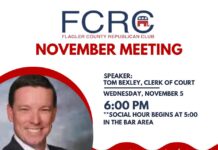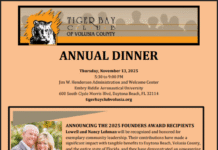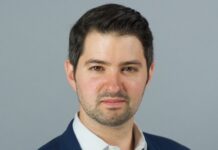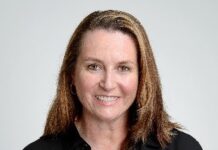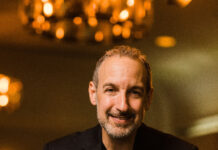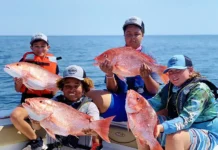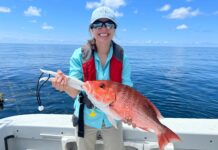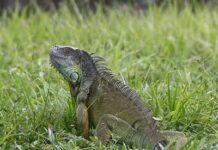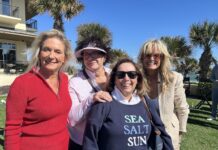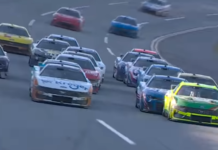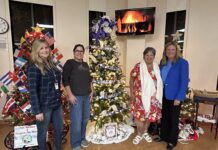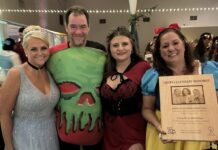FLAGLER COUNTY, Fla. – In the earliest days of the Florida settlers, homemaker and farming skills were valuable assets as they went about putting down roots in a new land. The convenience of the 21st century has led to a mainstream loss of these skills.
But not at the Florida Agricultural Museum.
Hosting the Lost Arts Festival on Sunday, September 23rd, attendees were able to interact directly with volunteers, subject experts and museum staff to learn more about what was once a critical skill set.
Well-Seasoned Workshops
Blacksmith Sam Hayes patiently stoked the fire, heating the iron while explaining the techniques used to create nails and hooks to enthralled young audiences in the front row.
“Professionally I’m trained as a full-time welder, right now I’m taking a break and working here at the museum. This is what I do as a hobby,” said Hayes, whose family got into the art of blacksmithing after a Boy Scouts trip where they met the Florida Artist Blacksmith Association.
“They do an event every October which features blacksmithing as one of the main draws so we did classes there. I’m the main one that stuck with it along with my dad. Here today, I’m working on nails and finishing off a hook.”
The crack of the whip captivated visitors of all ages, and cattlewoman Diane Ross explained the techniques used by cattle ranchers for centuries, right here in Florida.
“I grew up on a Florida ranch in St. Johns County with 4,100 acres and 1,100 head of cattle,” said Ross. “We sold the ranch and it’s now the World Golf Village. Now I’m retired and have old scrub cows like you see right here that can be traced all the way back to when Ponce and Pedro brought them to St. Augustine. My family goes way back with cattle, and I loved it.”
Explaining the long history of Florida cattle ranching to folks, especially from cattle-country places like Texas or Montana, is fun for Ross.
“I do programs during the year. It’s exciting to see kids realize it doesn’t come out of Publix. I love teaching this and it’s a history that needs to be told.”
Other demonstrations included finger weaving, candle dipping, model trains rides, and a walk through the 1880s Clark Homestead for an authentic look at what life was like for some of Florida’s earliest settlers.
New to the museum, seventh generation Floridian Eric Wilkerson worked with visitors to learn the art of cattle roping. He appreciates the opportunity to share his skills with those who may not have a chance to experience the ranching industry otherwise.
“I’m about a seventh generation Floridian, my family, we’re a Native family, from North Carolina and Georgia, and moved down here in the 1880s. We got an allotment of land and we still live on about 30 acres of that land. I grew up working cows and farming. I used to do amateur team roping, all over the southeast,” shared Wilkerson, taking part in his first public event at the Florida Agricultural Museum.
“I think it’s very, very important. This gets kids off their phones, it lets them see that growing up back in the day wasn’t quite as easy as it is, and lets them have perspective,” he said. “I think it’s good that we know all the history that made this state awesome like it is. I’m a true Floridian, and I absolutely love it. Anything to do for the people’s knowledge about Florida, I like to be involved with it.”
Wilkerson is just one of the people who has discovered the Florida Agricultural Museum and fallen in love with it according to museum director Kara Hoblick. Since taking the helm in 2018, her passion for the property and enthusiasm has led to significant upgrades and a growth in public engagement.
“The purpose of the Lost Arts Festival is to educate the public about how things were made before machinery, when things were made all by hand, and how people lived in the 1800s,” said Hoblick.
“A lot of people find us which is very convenient, and we really do try to reach out to the community. We really need our people who are passionate about what they do,” said Hoblick.
Building for the Future
Hoblick recently hosted Florida Commissioner of Agriculture Wilton Simpson for a tour. Showcasing the current exhibits, she was able to share future plans with Commissioner Simpson.
“We have not had a Commissioner of Agriculture on the property since we started with Doyle Connor, Sr., so this is the first Agricultural Commissioner since then. We gave him an extensive tour, part of that was on horseback and he got to see firsthand exactly what we are doing,” said Hoblick.
“He is extremely supportive of what we are doing. He is proud of where we have come in the past and he is helping us, giving us direction on how to move forward. He is also helping us to apply for state funding through the Florida Legislature.”
“We are going to be asking for recurring funds and also be asking for three major structures. We’ve asked for a restroom and exhibit space for our school touring complex, which is the Old Florida Museum. The second project is, priority number two, a visitor’s center which will be a discovery center with the administration offices, gift shop, café, rotating exhibits, conference rooms. The third priority is a livestock barn where we can educate the public not just about horses and the staging area for our trail rides, but educate the public mostly about Cracker livestock and any other type of ranching done in Florida.”
As legislative interest builds on the support of Florida Speaker of the House Paul Renner and Florida Senator Travis Hutson, Hoblick is set to welcome Florida Senator Jay Collins and his family this fall to tour the museum and property.
“The most important part about him being here is that he is the Chair of the Senate Ag Committee.”
“The potential is phenomenal. We have 460 acres. We are part of this conservation area corridor from US 1 all the way to the water that will be greenspace in perpetuity.”

